Regional Newsletters
June 2020 Statewide Newsletter

Conducting Business at the Authority During COVID-19
Along with the state and the nation, the California High-Speed Rail Authority (Authority) has been adapting to and addressing the evolving circumstances associated with the COVID-19 pandemic. However, work on the nation’s first high-speed rail program is continuing as we work to deliver clean, electrified high-speed rail in California.
Construction is Progressing in the Central Valley: Despite the COVID-19 challenges, construction progress in the Central Valley continues to build. We continue to increase the number of men and women working on the project in the Central Valley, with the average number of weekly workers rapidly approaching 900 as of mid-May. Since the start of construction, almost 4,000 workers have been dispatched to work on the project. Workers have also completed 78 miles of guideway and 41 structures are either underway or complete, and we anticipate the competition of several structures this summer. These are important jobs in a time where unemployment numbers are particularly high. The safety of our construction workers is a top priority, and we continue to work with various unions, the State Building and Construction Trades, our contractors and construction management teams to implement best practices for safety at those job sites.
Environmental Work is Progressing Statewide: The Authority has also released four draft environmental documents, demonstrating our commitment to meeting our federal obligations to fully identify the route of the high-speed rail system from San Francisco to the Los Angeles Area. The Bakersfield to Palmdale Draft Environmental Impact Report/Environmental Impact Statement (EIR/EIS) was released in February, with public comment wrapping in April. The San José to Merced Draft EIR/EIS was issued in April, with that comment period wrapping at the end of May. Just last week, we issued the Draft EIR/EIS for the Burbank to Los Angeles project section, and we anticipate issuing the San Francisco to San José Draft EIR/EIS in early July. As a result of COVID-19, and in concert with state and local stay-at-home requirements, we have conducted open houses and hearings about these documents online, with hundreds of people from across the state participating.
This quarterly newsletter contains more information about the Draft 2020 Business Plan, which is due to the Legislature July 1st, and other topics specific to the regions of the state, but the bottom line is that the progress happening on high-speed rail in California demonstrates that this state continues to be a national leader on clean transportation. Now is not the time to turn back.

2020 Business Plan Moves Towards Adoption
Every two years, the California High-Speed Rail Authority (Authority) is required to submit a business plan to the California State Legislature that has been adopted by the Authority’s Board of Directors. The Authority’s draft plan was released in February for public review and comment, but due to the COVID-19 pandemic, the due date for comments was pushed back from mid-April to June 1, with the consideration of the adoption of the plan by the Board scheduled for June and the final plan to be submitted to the Legislature by July 1.
On May 27, Authority CEO Brian Kelly and CalSTA Secretary David Kim testified before the California Assembly Transportation Committee at an informational hearing on the draft plan. Lawmakers asked questions and provided their input and general thoughts on the plan and the future of the high-speed rail program. CEO Kelly acknowledged that while every business plan is important, the next two years are especially critical for the Authority. Within the next two years, the Authority will work to meet the deadline to complete construction in the Central Valley, lay rail, and complete environmental reviews from San Francisco to the Los Angeles area as per our federal agreements.
Today, there are 350 miles of electrified high-speed rail in project development and construction in the three regions of the state, and the Draft 2020 Business Plan lays out a path forward for high-speed rail in California by using current resources and assets to deliver the first building block of a statewide high-speed rail system: 171 miles of 220 mph, electrified high-speed rail infrastructure in the Central Valley.
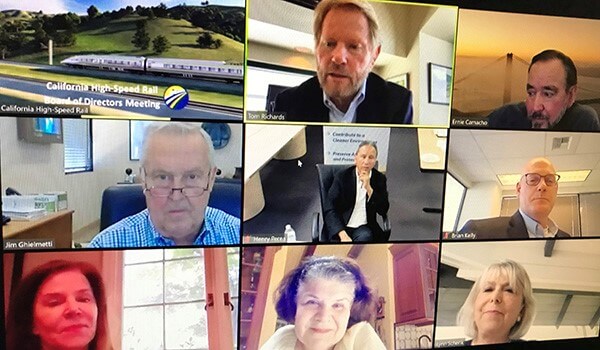
Virtual Meet-Ups: Conducting the Business of the Authority Online
In this new world of conducting business via Zoom, Skype, or any other number of online platforms, like so many others, the California High-Speed Rail Authority (Authority) has embraced technological options to execute our work on the high-speed rail program.
In April, we held our first virtual Board of Directors meeting, which like our general in-person meetings, allowed for presentations by staff on the business of the Authority and opportunities for public comment. We anticipate hosting a virtual public meeting in June to bring the Draft 2020 Business Plan to the Board for consideration.
We have also jumped at the opportunity to continue to engage with people about high-speed rail. Our CEO Brian Kelly and CFO Brian Annis have participated in webinars in partnership with the U.S. High-Speed Rail Association and other stakeholders to provide updates about the latest news on the project. We will continue to seek additional opportunities to engage with a broad audience on these digital platforms as the year progresses.
In March, in response to the COVID-19 pandemic, we began shifting our external public meetings to a virtual format. With the issuance of environmental documents in Northern and Southern California this year, it is important that we provide members of the public with the opportunity to provide comment and input on these documents to help inform out decision-making progress going forward.
Day-to-day life also continues at the Authority. More than 90 percent of the organization is now teleworking on a full-time, part-time or rotational basis, and, consistent with the Governor’s recent budget revisions, we are looking at ways to continue meeting virtually with our colleagues and we have stopped all non-essential travel. The health and safety of our employees and the public is a top priority.
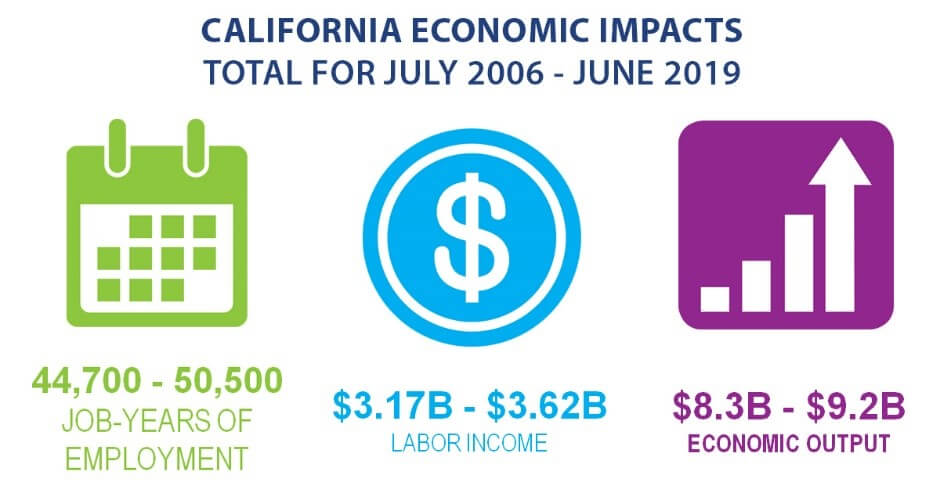
New Economic Data Shows Power of HSR Investments
Investment in high-speed rail is supporting jobs, labor income and economic output throughout California. A recently updated report on the economic impact of California high-speed rail shows how investments in the program are paying immediate dividends.
From July 2006 through June 2019, the California High-Speed Rail Authority invested about $5.7 billion in planning and constructing the nation’s first high-speed rail system. High-speed rail contractors hire workers throughout the state and pay other businesses for goods and services. Workers spend their earnings throughout the economy. These direct and indirect impacts induce statewide economic activity by pumping money back into local and regional economies.
- Through June 2019, the project has generated approximately 50,000 job-years of employment. These are job equivalents to a full-time job for one year and include not only construction workers and engineers, but also induced jobs from all the economic activity spurred by the project.
- The construction workforce continues to grow for the project, with the week ending April 3, 2020 averaging 821 construction workers deployed on the project.
- More than 3,500 construction workers have been dispatched to high-speed rail construction sites as of January 2020, 418 of which were disadvantaged workers.
See highlights from the report, an interactive economic map, the full report and more at https://hsr.ca.gov/programs/economic-investment/.
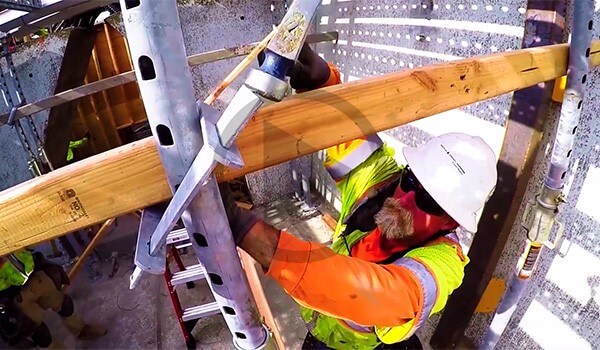
Building for the Future of California
High-speed rail is forging ahead in California’s Central Valley. In these challenging times, we’re putting California to work while building the future of transportation in our state. With more than 30 active high-speed rail construction sites and more than 3,700 workers dispatched to date, we’re building for the future of California. Visit https://youtu.be/bTvgs0Q5OdQ to see more.
Northern California Regional Update
June 2020

California High-Speed Rail Authority Releases Draft Environmental Document for First Segment into Northern California
The California High-Speed Rail Authority released the first project-level Draft Environmental Document for a project section in Northern California on April 24. The document covers the 90-mile extent of the 145-mile San Jose to Merced Project Section from Scott Boulevard in Santa Clara to Carlucci Road in Merced County.
“The release of the draft environmental document for this project section marks an important milestone for the high-speed rail program. With the release of this first environmental document in Northern California, we are continuing to show progress on every mile of the statewide system,” said Authority CEO Brian Kelly. “We look forward to hearing from the communities along the route to ensure our project provides a clean, next-generation travel option while improving local quality of life.”
“This is an important step towards bringing high-speed rail to San Jose and the Silicon Valley. Now is the time to make investments that will connect all of California with sustainable transportation options,” said City of San José Mayor Sam Liccardo. “We want to see high-speed rail get to San Jose — and will keep working with the Authority to limit impacts to neighborhoods and ensure that Diridon Station becomes a world-class intermodal hub.”
The San Jose to Merced Project Section would connect Silicon Valley and Central Valley with a fast and reliable high-speed rail travel option. By shortening travel times and integrating the high-speed rail system with other modes of travel, this segment of the statewide high-speed rail system will tie California’s regions together like never before. This section is also an important component of the entire statewide system that will connect the Bay Area with the Central Valley and Southern California.
The approximately 90-mile project extent will travel through or near the communities of Santa Clara, San Jose, Morgan Hill, Gilroy, and Los Banos. The project comprises high-speed rail system infrastructure, high-speed rail stations at San Jose Diridon and Gilroy, a maintenance of way facility (MOWF) either south or southeast of Gilroy, and a maintenance of way siding (MOWS) west of Turner Island Road in the Central Valley. Stations at San Jose Diridon and Gilroy would provide links with regional and local mass transit.
With the release of this San Jose to Merced Draft Environmental Impact Report/Environmental Impact Statement (EIR/EIS), the Authority remains on track to complete environmental clearance for the full Phase 1 system by the federally mandated 2022 deadline.
In response to agency and stakeholder requests in consideration of limitations caused by the outbreak of COVID-19, the Authority elected to extend the public review period for 15 days to June 23, 2020 for the Draft EIR/EIS.

California High-Speed Rail Authority Launches Online Resources for Northern California Community Open Houses
The California High-Speed Rail Authority (Authority) in April launched a new online web portal for the San Jose to Merced project section. The new resource is meant to help the public better understand the San Jose to Merced Draft Environmental Document while complying with public health and safety measures to address the outbreak of COVID-19. The online portal was used to host webinar open houses with staff and will be available through the end of the public comment period on June 23rd.
“This is an opportunity to expand our outreach and engagement in a new and innovative way while also adhering to important public health requirements during this COVID-19 pandemic. By hosting this online format during the entire public comment period, we are hoping to reach even more people than we would have with in-person meetings,” said Boris Lipkin, Northern California Regional Director. The new online web portal, linked on our homepage hsr.ca.gov, will remain up for the duration of the public comment period for the Draft Environmental Impact Report/Environmental Impact Statement (EIR/EIS) for the San Jose to Merced Project Section.
Metrics collected by the Authority illustrated that open house webinar engagement was similar to the attendance figures during Preferred Alternative open houses that were held in 2019 with about 150 attendees over three sessions. As of May 20, the website had received over 1,100 views from members of the public looking to review materials, watch videos, and learn more about the project section. The public can continue to submit their comments on the San Jose to Merced Draft EIR/EIS the following ways:
- Via web comment form on the Authority’s website: www.hsr.ca.gov/programs/environmental/eis_eir/draft_san_jose_merced_comment.aspx
- Via email to San.Jose_Merced@hsr.ca.gov with the subject line “Draft EIR/EIS Comment”
- Via conventional mail at the address below:
Attn: San Jose to Merced: Draft EIR/EIS California High-Speed Rail Authority
100 Paseo de San Antonio, Suite 300
San Jose, CA 95113
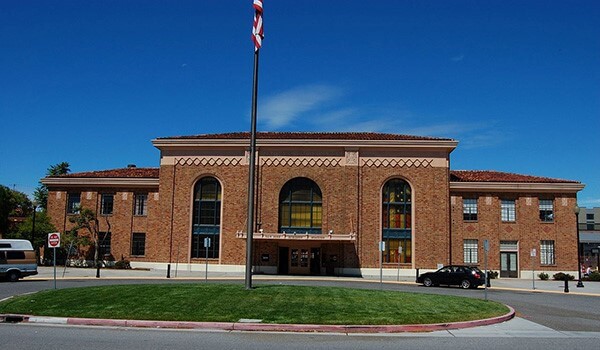
CEO Brian Kelly Gives Planning Updates for San Jose’s Diridon Station
During the February Authority Board meeting, CEO Brian Kelly updated Directors on the progress being made in the efforts to redevelop the Diridon Station in San Jose into a major intermodal hub for the region and the state.
Kelly told the Board that over the past year, the Santa Clara Valley Transportation Authority (VTA), the City of San José, Caltrain and the Authority have worked to develop the first phase of the Diridon Integrated Station Concept (DISC)—a shared vision for the future spatial layout of Diridon Station as an intermodal hub that integrates with the surrounding community and supports the growth anticipated with Google’s Downtown West plan. This has been an early conceptual planning process, in which we have been one of four partner agencies working under a cooperative agreement to form a collaborative process for station planning.
Diridon Station is the primary transit hub of the South Bay, currently serving approximately 17,000 daily passengers and anticipated to grow to more than 100,000 passengers per day by 2040. The station currently connects Caltrain, the Capitol Corridor, the Altamont Commuter Express (ACE) and Amtrak passengers with VTA light rail and bus service, as well as other regional bus transportation providers. Diridon Station is the major hub of the high-speed rail system in Silicon Valley due to its important connectivity to downtown San José and the rest of the Bay Area. VTA and Bay Area Rapid Transit (BART) are also working together to extend service from the new Berryessa BART station to Diridon by 2030, further increasing connectivity and ridership.
DISC envisions the gradual transformation of the station area from a predominantly auto-orientation to a transit-oriented, world-class multimodal transit hub and gateway to Silicon Valley. The planning effort seeks to leverage billions of dollars spent on transit systems and connectivity to maximize transit ridership, reduce auto dependence, create travel choice and attract investment. The partner agencies developed a unified vision for the spatial layout of the station. The next phases of work will include developing a cohesive strategy for how to structure and advance the interrelated program of projects at and around the station.

Bay Area Receives California Climate Investment Grants to Improve BART and the Muni Forward Program
In the recent 17 grants provided by California’s Transit and Intercity Rail Capital Program (TIRCP), the Bay Area was a big recipient. New grant funding will support two projects that will significantly improve speed, reliability and safety for public transit users. For BART, TIRCP funds will contribute $107 million to the Transbay Corridor Core Capacity Program. This is an exciting project for BART users, with an expected completion date of 2031. The project will allow for a rail service increase in the Transbay Tube from 23 to 30 trains per hour, reduce wait times from 15 to 12 minutes for high-demand segments and replace old railcars with newer more modern and safer models.
Also, within the fourth wave of grants, the San Francisco Municipal Transportation Agency will receive a $41 million grant for the Muni Forward Program. The TIRCP grant will support a range of improvements that include transit signal priority, transit-only lanes, installation of accessible ramps and many changes to increase pedestrian safety. The project has an estimated completion date of 2026.
To date, the state has invested more than $4.5 billion in Northern California rail transit projects, which includes over $1.5 billion provided by the California High-Speed Rail Authority.
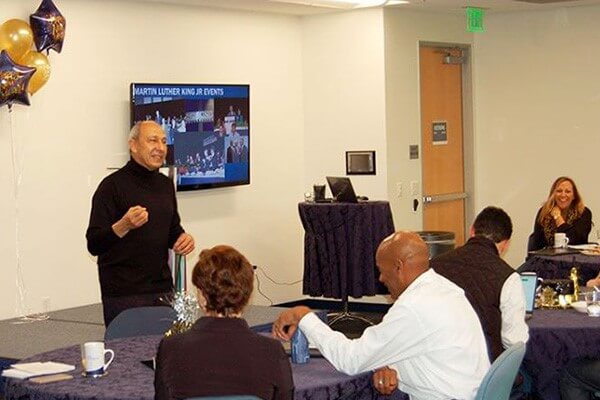
From a ‘Young Company’ to a Leader in Information Technology
The late 1990s was a time when any new internet business venture was golden, until it wasn’t. Venture capitalists poured billions of dollars into new start-ups until the big payoffs didn’t happen. Overnight, the dot.com era stopped. Why?
Read more about Sacramento-based Delegata Corporation in the Small Business Newsletter at https://www.buildhsr.com/flipbook/vol_08_issue_02/default.html#page=10.
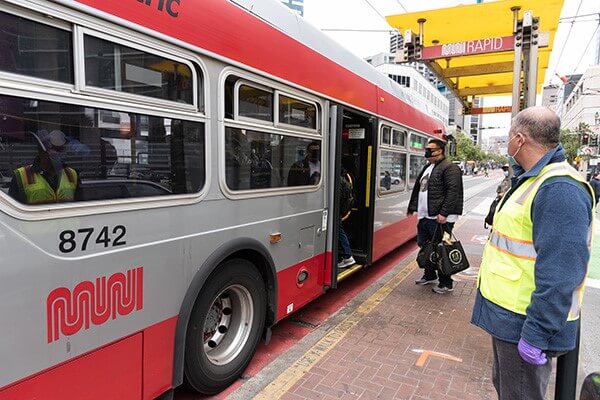
photo courtesy of SFMTA Photo (SFMTA.com/Photo)
San Francisco Municipal Transportation Agency Provides Essential Service
Under COVID-19, the San Francisco Municipal Transportation Agency (SFMTA) was deemed an essential service, continuing to operate to provide much needed service in the region.
While ridership has fallen precipitously, the SFMTA continues to serve approximately 100,000 riders a day – ensuring such workers as nurses, cooks, custodians and others deemed as essential are able to travel to their jobs.
SFMTA has instituted some of the strongest health protections for its operators, mechanics, car cleaners and customers to minimize risk of transmission on their buses. These efforts have been paired with a continued effort to maintain regular service, so remaining essential workers have the space to maintain recommended distances on Muni.
However, it has become increasingly difficult to continue delivering service on the agency’s full network due to operator availability and the changing trip needs of the community. To address issues of operator shortages, the SFMTA redesigned their entire network to focus on essential services in a manner of days, a process that normally would take months. In order to maintain service levels to provide social distance, the agency is focusing available resources on the lines that most critically serve essential trips, resulting in a reduction of Muni service, and prioritizing routes in most critical need during the pandemic. As restrictions begin to ease, SFMTA is developing plans for how it will ramp service back up.
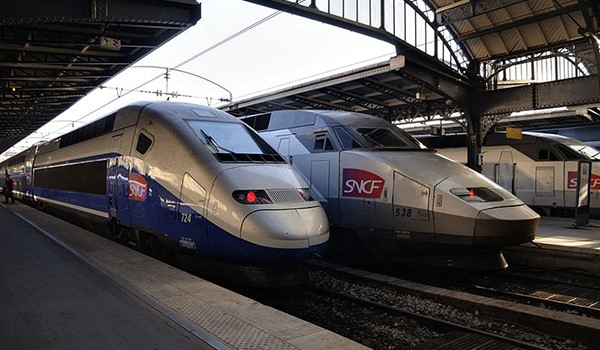
France turns one of its high-speed trains into an ambulance to transport coronavirus patients across the country
France has been using one of its high-speed trains as a make-shift ambulance to transport COVID-19 patients from hospitals in the east to western medical centers that have a greater capacity to treat patients.
Twenty coronavirus patients in critical condition were recently transferred to a larger hospital in France by a high-speed train that was transformed to be medically equipped, several news outlets reported.
The eastern part of France has been hit especially hard by the outbreak, and hospitals in the Loire Valley in the west have more space to treat patients.
Four patients can fit on each rail car on the train, with stretchers strapped to the tops of the seats. Each rail car also has ventilators, oxygen, and six medical staff, according to NPR.
Additionally, while the train won’t be traveling at the maximum of 185 miles an hour, it would be able to transport patients the 500 miles between Strasbourg and Angers in about five hours.
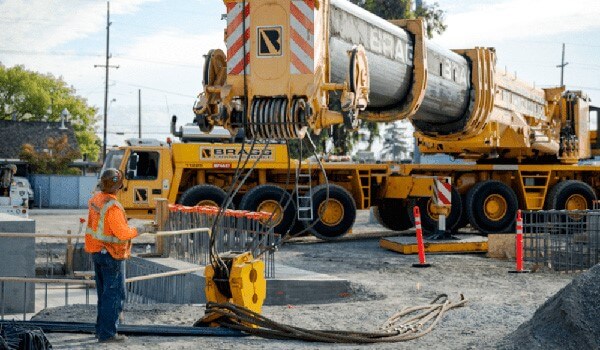
Caltrain Electrification Update
May was a landmark month for the electrification of Caltrain with the first trainset placed on the special test track at the Salt Lake City manufacturing facility. The track is now powered with 25kv and the train’s pantograph–which collects power from the overhead wires–has been raised and connected. Over the coming weeks, the train will undergo high voltage static testing as power is incrementally applied to the trainset while it’s stationary on the track. The train will then undergo low-speed acceleration and brake tests.
Additionally, crews have installed more than 1,000 poles have now been along the corridor from South San Francisco to San Jose. Each pole installed will support the wires needed to provide power to the new electric trains. This exciting milestone brings Caltrain one step closer to providing a modernized electric commute.
To learn more about the Caltrain Modification Program, visit www.calmod.org.
Southern California Regional Update
June 2020
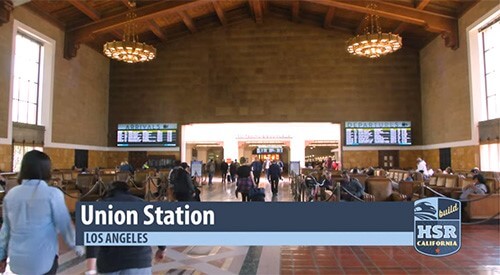
Authority, LA Metro Reach Agreement to Advance Link US Funding Plan
The transformative Link Union Station Project (Link US) at Los Angeles Union Station (LAUS) has taken another step closer toward reality.
The California High-Speed Rail Authority’s (Authority) Board of Directors approved a preliminary $423 million funding plan with LA Metro, a bold investment of Proposition 1A high-speed rail funds that paves the way for future high-speed rail service in the region.
A Memorandum of Understanding between the Authority and LA Metro envisions completion of the Link US project prior to the 2028 Olympics.
The April 21 Authority Board action further highlights a proposal for high-speed rail’s shared use of right-of-way in Palmdale, LAUS and several additional locations within Southern California. Link US will allow trains to enter and exit the historic station from both existing northern tracks and new tracks to the south over the 101 freeway. It’s also anticipated to significantly increase capacity for rail service while reducing train idling times, and greatly expanding the station’s capacity with a new expanded passageway under the tracks. The project also features new platforms, escalators and elevators.
Watch this video to learn more about the LAUS project partnership: https://www.youtube.com/watch?v=DnJhRzCr7LE&feature=youtu.be

Fullerton Small Business Paves Way for High-Speed Rail Waterway Crossings
What impacts could high-speed rail bridges and overpasses have on waterways? Ask Vik Bapna, co-founder of California Watershed Engineering (CWE), one of more than 550 Small Businesses helping bring high-speed rail to California.
In 2006, Bapna left a job with the Los Angeles County Flood Control District and co-founded CWE with Jason Pereira.
Today, around 35 employees work for the civil engineering, water resources and environmental engineering firm. Certified as a Small and Disadvantaged Business Enterprise, CWE conducts hydraulic and water quality analysis for the Environmental Impact Statement for high-speed rail’s Los Angeles to Anaheim segment.
“As transportation folks look to lay down proposed track, they’re not looking from a [water] perspective,” Bapna said. “We analyze that and let them know if there are issues.”
For more on CWE, see our May 2020 Small Business Newsletter.
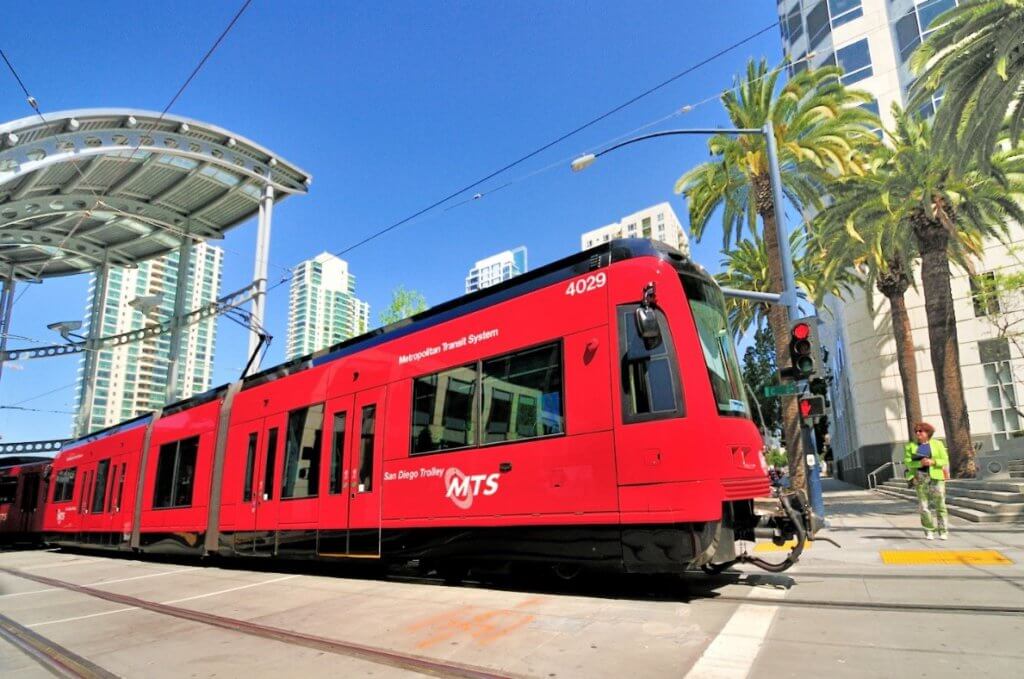
Southern California Receives California Climate Investment Grants to Improve Antelope Valley Line and Pacific Surfliner
Transit systems in the Los Angeles and general Southern California area continue to leverage Transit and Intercity Rail Capital Program (TIRCP) grants for transportation projects. In the recent awards issued by the California State Transportation Agency, LA Metro and Metrolink will see significant improvements to the Antelope Valley Line with an award of $107 million. The Antelope Valley Line runs from the northern end of Southern California, transporting people from suburban regions such as Lancaster and Palmdale to urban destinations such as the Burbank Airport and L.A. Union Station. Investments for the Antelope Valley line will be targeted to increasing capacity with an expected completion date of 2027. The transformation of the Antelope Valley Line, supported by multiple funding sources, is expected to decrease traffic during peak hours by providing efficient options for commuters.
Improvements to the Antelope Valley Line align with the Southern California Optimized Rail Expansion (SCORE) program. The SCORE guidelines support the connection between intercity rail and Metrolink station communities and aligns regional bookend projects to support intercity rail and future high-speed rail stations.
Also taking a closer look at Southern California, TIRCP is contributing a $38.7 million award to construct two new maintenance facilities in San Diego and San Luis Obispo for Amtrak’s Pacific Surfliner. Creating these facilities will help improve rail service in and out of both locations, providing a space for overnight storage and maintenance. The Pacific Surfliner will see significant growth in service and ridership as the maintenance facilities will be able to maintain more, longer and modernized trains. This project has an expected completion date of 2026 and is part of a larger state rail plan to increase ridership and improve services statewide. To date, the state has invested over $4.6 billion in Southern California rail transit projects, which includes over $900 million provided by the California High-Speed Rail Authority.
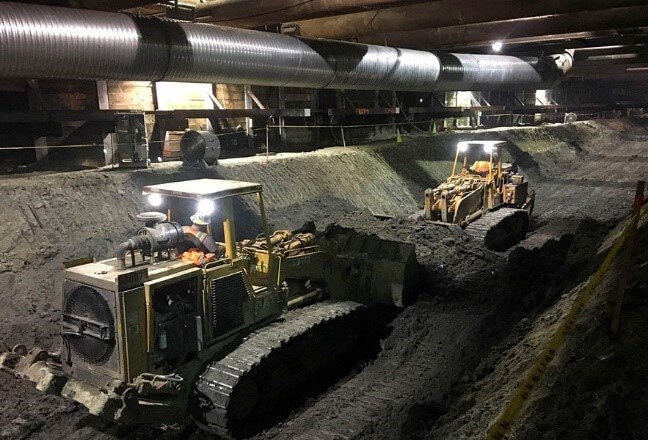
Purple Line Extension Connects Los Angeles to its Past and Future
One of the most anticipated subway projects in Los Angeles, the Purple Line Extension, expands the Los Angeles Metropolitan Transit Authority’s (Metro) ‘D’ Line west from downtown Los Angeles under the iconic Wilshire Boulevard to Westwood, with a completion goal for the 2028 Summer Olympics in Los Angeles.
Originally a trail used by Tongva tribes to access tar pits (“la brea”) and settlers in 19th century ‘ranchos’, Wilshire Boulevard is now a 16-mile automobile commuter corridor from downtown through Koreatown, Mid-Wilshire, Century City, Beverly Hills, and Westwood, ending in Santa Monica. When finished, the Purple Line Extension will provide a high-capacity, 25-minute alternative for commuters from downtown Los Angeles to Westwood.
Currently the Metro D Line shares the Red Line tracks to the station at Wilshire and Vermont Boulevard, and ends at two stations in Koreatown. Construction continues the D Line under Wilshire Boulevard in three sections using two tunnel boring machines in each section to create two parallel tunnels at least 20 feet below the water table.
The first section, between Wilshire/Western and Wilshire/La Cienega, is under construction with an anticipated completion date of 2023. Section 2, scheduled for completion in 2025, brings the subway to Beverly Hills and Century City. Construction on section 3 began in 2019 which extends the project to two stations in Westwood, one near UCLA, with an expected completion date of 2027.
On May 29, 2020 Section 3 of the Purple Line Extension Program was one of 12 nation-wide infrastructure projects to receive additional funding from the US Transportation Department’s Capital Investment Grants Program (CIG). Section 3 was awarded $200 million for FY 2018 and FY2019, awarded a Full Funding Agreement in March 2020, and an additional $100 million for FY2020.
Once a boulevard designed around the automobile experience, the Purple Line Extension will add eight subway stations to Wilshire Boulevard when complete. Stations are planned for Wilshire/Western, Wilshire/La Brea, Wilshire/Fairfax, Wilshire/La Cienega, Wilshire/Rodeo in Beverly Hills, Wilshire, Constellation Blvd. in Century City and in Westwood at UCLA and the Veterans Hospital near the 405 Freeway.
The Purple Line Extension project ensures the D Line will connect business and residential hubs, enhance access to famous neighborhoods and architecture along Wilshire Boulevard, and connect passengers to a growing rail network across Southern California.
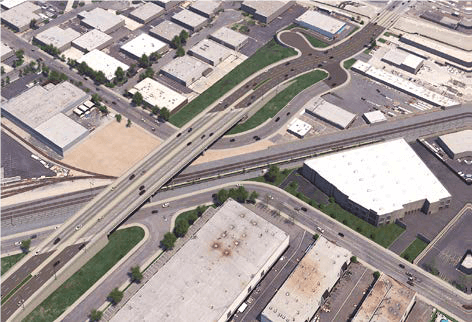
Transformative Grade Separation Now Underway at Rosecrans and Marquardt Crossing
The intersection of Rosecrans Avenue and Marquardt Avenue in Santa Fe Springs is one of the most dangerous rail crossings in California according to the California Public Utilities Commission (CPUC). More than 112 freight and passenger trains and 45,000 vehicles pass through this intersection every 24 hours, which is part of the 351-mile Los Angeles-San Diego-San Luis Obispo Rail Corridor (LOSSAN) used by Burlington Northern Santa Fe (BNSF), Amtrak, Southern California Regional Rail Authority (Metrolink) and Los Angeles County Metropolitan Transportation Authority (Metro) trains. A grade separation at this diagonal at-grade crossing will improve safety and traffic flow, increase the efficiency of train movements along the rail corridor, and reduce greenhouse gas emissions from vehicles waiting at the train crossing.
In 2017, the California High-Speed Rail Authority (Authority) Board approved $76.7 Million in funding from High-Speed Rail Prop 1A Early Investment Funds toward the Rosecrans/Marquardt Grade Separation Project which also has proposed federal funds and funding from other state improvement programs. Metro is leading the project to transform this dangerous crossing with partners in the City of Santa Fe Springs, City of La Mirada, BNSF, California Department of Transportation (Caltrans), Amtrak, CPUC, Federal Railroad Administration (FRA), Metrolink and the Authority.
The project will grade separate the intersection of Rosecrans Avenue, a major arterial roadway 84 feet wide with 4 lanes, and Marquardt Avenue, a minor arterial roadway 64 feet wide with two lanes, by elevating Rosecrans Avenue. The first phases of construction – building demolition and third-party utility relocation – are now taking place. Work anticipated in 2020 includes the installation of new power poles and overhead and underground electrical work, with construction activities and bridge work scheduled to continue until completion in 2023.
Positive Train Control (PTC), mandated by Congress in 2015 for enhanced rail safety, and other requirements for future high-speed trains are also incorporated in the requirements of this transformative project.
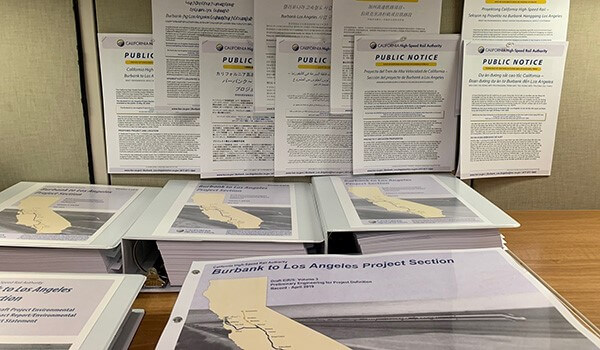
Burbank to Los Angeles Achieves Major Milestone
On May 29, the California High-Speed Rail Authority (Authority) released the project-level draft environmental document for the approximately 14-mile Burbank to Los Angeles Project Section. With the document’s release the 45-day comment period has begun and remains open until July 16.
The Burbank to Los Angeles Project Section connects two multi-modal transportation hubs, the Burbank Airport Station in Burbank and Los Angeles Union Station (LAUS) in Los Angeles. The stations would provide links with regional and local mass transit services as well as connectivity to airports and highway networks in the San Fernando Valley and Los Angeles Basin.
The Draft Environmental Impact Report/Environmental Impact Statement (EIR/EIS) evaluates the impacts and the benefits of a No Build Alternative and a Build Alternative. The Authority’s Preferred Alternative includes a new station near the Hollywood Burbank Airport, modifications to LAUS (raising the passenger platforms and installation of an overhead contact system), new electrified tracks within the existing railroad corridor (which could be shared with Metrolink and Amtrak), a tunnel under the Hollywood Burbank Airport and traction power facilities. The Draft EIR/EIS also considers six new grade separations of local streets from the rail corridor.
The release of the Burbank to Los Angeles Draft EIR/EIS keeps the Authority on schedule to complete environmental clearance for the full Phase 1 system by the federally mandated 2022 deadline.
The Authority invites the public to participate in a virtual community open house (June 18, 5 p.m. to 7:30 p.m.) and a virtual public hearing (July 8, 3 p.m. to 8 p.m.). The virtual public hearing will provide an opportunity for the public to submit verbal and written comments on the Draft EIR/EIS, which will be finalized and released in 2021. To attend either meeting or submit comments please visit the project website at https://hsr.ca.gov/high-speed-rail-in-california/project-sections/burbank-to-los-angeles/
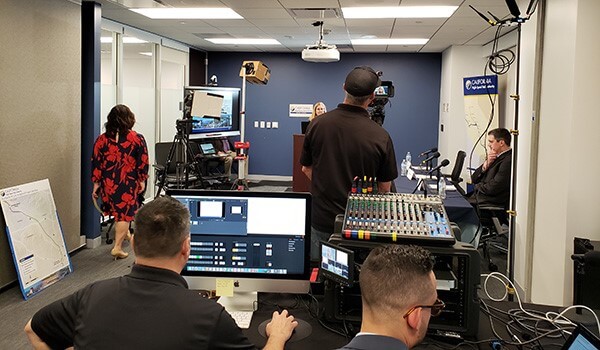
Southern California Online Meetings Moving Forward
Despite the coronavirus pandemic that has changed the way the world operates, progress on the California high-speed rail project continues.
In an effort to keep the project moving forward without in-person public meetings, the California High-Speed Rail Authority’s outreach team has begun moving the required meetings for the Environmental Impact Report (EIR) and the Environmental Impact Statement (EIS) online.
Both the EIR and EIS require that the public be given opportunities to learn about a project and provide their feedback to planners. This usually means several rounds of open house meetings and public hearings. That isn’t possible due to the statewide quarantine brought about by the global pandemic. Fortunately, during the internet age, there are alternatives.
Two online meetings were held in March to provide information and take questions on the segment of the high-speed rail project that will be constructed between Burbank and Los Angeles’s Union Station. The two webinars took place on March 11 and 12 as project planners went through a presentation describing that section of the project, then took questions from members of the public who had logged on to a chat feature linked on the project website.
The 14-mile long Burbank to Los Angeles section connects Burbank and Los Angeles Union Station, running mostly within the existing railroad corridor near the Los Angeles River. The meetings provided the public with an opportunity to review and ask questions that will help planners prepare for the formal release of the Draft EIR/EIS expected later this summer. Approximately 50 people watched the presentation and a number had questions afterward on subjects covering a variety of topics from right of way to overall project cost.
Other segments of the project are also taking their required public briefings online. An online public hearing on the Bakersfield to Palmdale section was held April 23rd which saw more than 50 members of the public call in or log on to participate.
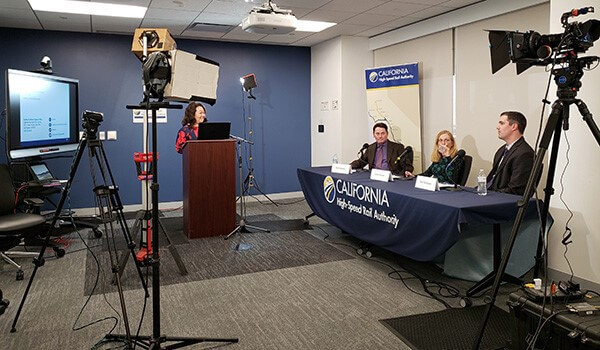
Coping with COVID-19 – Public Outreach Efforts Continue Online
Public outreach is challenging, but even more so with the COVID-19 pandemic presenting limitations for organizations to communicate and share project details with communities. By its very definition, ‘outreach’ implies direct and in-person communication between an organization and the community it serves, with the goal of capturing public comment on projects and environmental documents. Communications businesses that assist government agencies in holding public meetings and public hearings have tackled this challenge head on by swiftly adopting cutting-edge technology. Read more in the Faces of High-Speed Rail.
Quarterly Newsletter Archive
- Spring 2023 All Aboard Newsletter
- Winter 2023 Quarterly Newsletter
- Fall 2022 Quarterly Newsletter
- Summer 2022 Quarterly Newsletter
- Spring 2022 Quarterly Newsletter
- Winter 2022 Quarterly Newsletter
- Fall 2021 Quarterly Newsletter
- Summer 2021 Quarterly Newsletter
- Regional Newsletter - May 2021
- Regional Newsletter - February 2021
- Regional Newsletter - November 2020
- Regional Newsletter - August 2020
- Regional Newsletter - June 2020
- Regional Newsletter - February 2020
- Regional Newsletter - November 2019
- Regional Newsletter - August 2019
- Summer 2023 All Aboard Quarterly Newsletter
- Fall 2023 All Aboard Quarterly Newsletter
- Winter 2022 Quarterly Newsletter
- Regional Newsletters – Aug 2019
- Regional Newsletters – Nov 2019
- Regional Newsletters – Feb 2020
- Regional Newsletters – June 2020
- Regional Newsletters – Aug 2020
- Regional Newsletters May 2021
- Fall 2021 Quarterly Newsletter
- Summer 2021 Quarterly Newsletter
- Spring 2022 Quarterly Newsletter
- Summer 2022 Quarterly Newsletter
- Regional Newsletters – Nov 2020
- Winter 2023 Quarterly Newsletter
- Regional Newsletters – Feb 2021
- Spring 2023 All Aboard Quarterly Newsletter
- Fall 2022 Quarterly Newsletter
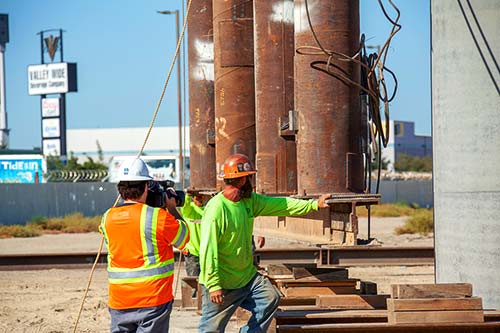
The California High-Speed Rail Authority makes every effort to ensure the website and its contents meet mandated ADA requirements as per the California State mandated Web Content Accessibility Guidelines 2.0 Level AA standard. If you are looking for a particular document not located on the California High-Speed Rail Authority website, you may make a request for the document under the Public Records Act through the Public Records Act page. If you have any questions about the website or its contents, please contact the Authority at info@hsr.ca.gov.

